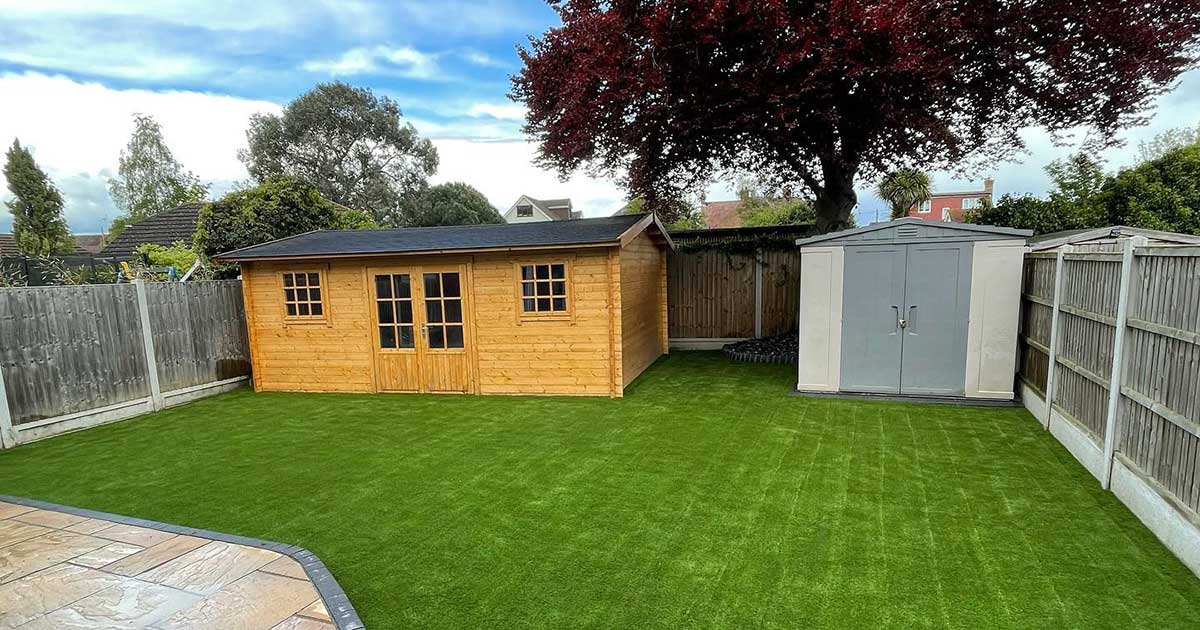We Supply. We Install. We Do it All.
Essex Artificial Grass Experts
You’ve made the jump from real grass to artificial grass and you’ve got no regrets. Thanks to your low-maintenance fake lawn that requires no mowing, strimming, or fertilizing (and never fades), you’ve got a vibrant green garden with no effort required and more time to actually enjoy it.
But while artificial grass is much more low maintenance than real grass, that doesn’t mean it doesn’t need a bit of care and attention every now and again.
Looking after your fake grass will ensure its longevity and allow it to maintain its fresh and healthy appearance for many years. A little light maintenance a few times a month will save you trouble and expense later down the line, keeping your fake lawn looking great for longer, as well as making it safer for kids and pets to play.
If you’re wondering about artificial grass aftercare, we’ve got you covered with this comprehensive guide to fake grass care and maintenance.

It’s good to stay on top of cleaning when it comes to the artificial grass as a build-up of dirt and debris can damage your lawn and be harder to clean later down the line. Here’s the quickest and simplest way to clean your fake lawn.
As we’ve already said, artificial grass is pretty low maintenance. But there are a few measures you can take to make sure it lasts as long as possible.
First, if you’re finding that weeds are still poking through the drainage holes of your artificial lawn, you can invest in a weed barrier or membrane to prevent them from coming through.
Pick any weeds as soon as you see them and brush or rake the grass regularly. Simply pull the tops off. Don’t dig around with a trowel or fork as this will ruin your artificial turf.
Once or twice a year, you could also use weed killer. Just make sure it’s a water-based solution to ensure it doesn’t damage your artificial turf.
Secondly, it’s important to repair any holes or tears in your fake lawn as quickly as you can. This will also help to ensure the lifespan of your artificial grass.
Is your artificial grass looking a little flat and lacklustre? Simply brush the blades of grass in the opposite direction. You could also top up the layer of sand infill.
Compared to the time and energy required to keep a real grass lawn looking neat and tidy, maintaining artificial grass is incredibly easy. This is just one of the many advantages of swapping from real grass to fake grass.
And if you look after it, your artificial grass could last from 15 to 25 years. For more information about the perks of artificial grass, get in touch to schedule your FREE site visit today.
Like this article?
